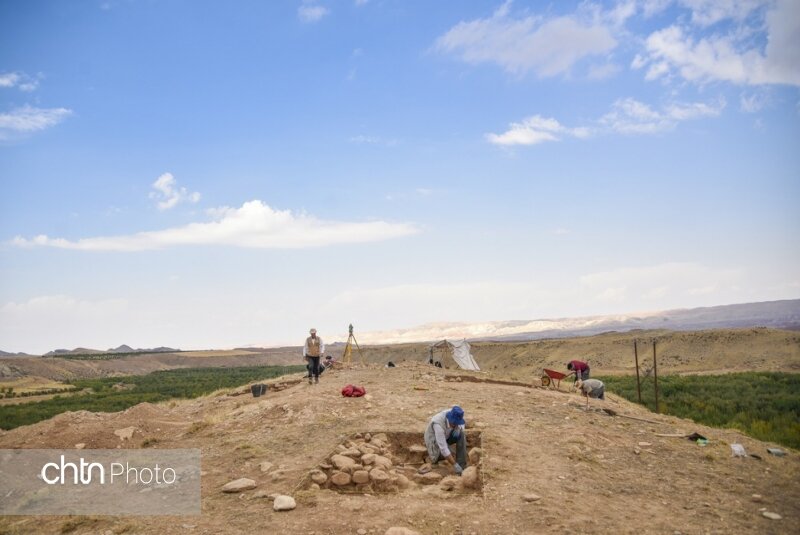Archaeological survey finds traces of metalworking in northwest Iran

TEHRAN – Archaeologists have discovered new evidence of prehistorical metalworking in Tepe Kuzechi, northwestern Zanjan province, the deputy provincial tourism chief has said.
The ancient hill contains a number of metal melting kilns, which provides evidence that the site dates back to the late Iron Age, when metalworking and pottery were practiced, Mohammadreza Mohammadpur announced on Wednesday.
Tepe Kuzechi is situated adjacent to the historically rich Chehrabad Salt Mine in Zanjan province, where several salt men and their personal belongings have been discovered so far.
Excavations at this site focused on determining the sequence of layers and identifying cultural periods, as well as determining whether or not there is any connection between the site and Chehrabad Salt Mine, the official explained.
Since Kuzehchi hill is the only ancient site around the mine that had superficial evidence from the Iron Age and the Achaemenid period, it became the subject of several archaeological surveys, he noted.
Iron Age is in fact final technological and cultural stage in the Stone–Bronze–Iron Age sequence. The date of the full Iron Age, in which this metal, for the most part, replaced bronze in implements and weapons, varied geographically, beginning in West Asia and southeastern Europe about 1200 BC but in China not until about 600 BC, according to the Encyclopedia Britannica.
Although in West Asia iron had limited use as a scarce and precious metal as early as 3000 BC, there is no indication that people at that time recognized its superior qualities over those of bronze.
Glimpses of metalworking in Iran
During the 5th and 4th millennia BC in Iran, craftsmen were able to create enough heat to reach temperatures required for the melting of most of the then known raw materials, and thus extract metals, according to Encyclopedia Iranica.
On top of that copper-smelting techniques became well known in various parts of Iran in this period. With the advancement of the knowledge of metallurgy in the Achaemenid era, finely crafted copper and bronze objects were created, continuing through ancient times.
Although copper is mentioned in geographical texts much less often than precious metals, it appears to have been mined over wide areas of Persia in early Islamic times.
In a travelogue inscribed by the medieval Arab traveler Abu Dolaf, he wrote about the Neyshabur copper mine though the extent of the deposits in Iran became known only from accounts of European travelers from the Safavid period onwards.
Sir John Chardin (1643-1713), for instance, wrote that “copper is found in Sari, Khorasan, and Qazvin. However, Iranian copper is not malleable. It has to be mixed with copper from Sweden and Japan to make it soft”.
Iranian salt men
Salt mummies are the highlights of the findings in the mine. In 1993, miners in the Douzlakh Salt Mine, near Hamzehli and Chehrabad villages in Zanjan Province, accidentally came across a mummified head, dated to 300 CE. The head was very well preserved, to the extent that his pierced ear was still holding the gold earring. The hair, beard, and mustaches were reddish, and his impressive leather boot still contained parts of his leg and foot.
However, in 2004, the miners discovered yet another “saltman”, which was followed by further excavation unearthing remains of a human body along with a large number of artifacts made of wood, metal tools, clothing, and pottery. In 2005, a systematic excavation began, three more mummies were excavated, and a sixth remained in situ, due to lack of funds for its storage. The context of the remains suggested that a collapse in the mine had caused the death of the miners in question.
ABU/AFM

Leave a Comment